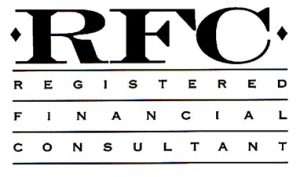Early this summer I wrote a piece on the SECURE Act and how it changed some aspects of how retirement accounts are handled. This article will go over some of the material previously covered and take a look at some additional aspects of the law that many may not be aware of. Regardless, it is apparent that the SECURE Act does not really make retirement a secure issue for many. This law has the most significant changes to retirement savings since 2006.
Corporate Changes to 401(k) Plans
Some of the broader changes that the SECURE Act did were to allow small businesses regardless of industry to pool funds and join together to get better pricing on their 401(k) plans. This change will allow many small business owners the opportunity to have affordable 401(k) plans for their employees. That can be seen as a win for both the company in better choices for the plan’s administrators and employees in the form of lower fees and better investment choices.
Then the act changed the auto-enrollment safe harbor contribution limits from 10% to 15%. What this does is it allows a company to form a policy for new hires whereby they can automatically enroll the new hire in the company’s 401(k) plan. This was done due to the fact that many do not join these plans when they are hired and when they do in many cases they do not set enough aside. It also simplified the non-elective contributions by providing notice and amendment flexibility.
And that is just the start. The new act makes dozens of changes to 401(k) plans, Individual Retirement Accounts (IRA), and annuities. We will continue to take a look at a few of these changes. Including those to the state-sponsored 529 education savings plans. And for those who are not aware, these changes went into effect on January 1, 2020.
Retirement Accounts
The SECURE Act allowed for many, not age 70 ½ to now delay their Required Minimum Distributions (RMD) to age 72. As most people are living longer in retirement it was apparent to many that this was a much-needed change in the laws due to the simple fact people are living to older ages. While it may not seem important it does allow an additional two years for the account to compound. It also repealed the maximum age of contributions of Traditional IRAs from 70 ½.
Many used IRAs as estate planning tools to transfer wealth from one generation to another due to the fact that a beneficiary was allowed to take RMDs based on their age at the time of the inheritance. This meant that a grandchild would be named as a beneficiary and take withdrawals over their lifetime thus allowing the IRA to continue to a compound what could be decades. That provision was withdrawn for beneficiaries other than spouses to a maximum of ten years. This means that for any who is obtaining an IRA after January 1, 2020, they will no longer be able to take RMDs based on their lifetime bur rather be limited to taking them over a ten-year period. This simple change will generate almost $15 billion in taxes over the next decade.
State-Sponsored 529 Plans
These are some amazing plans that are designed to assist a family in the planning for a loved one’s education expenses. While these plans used to be limited to post-secondary education expenses, they may now be used for qualified secondary education expenses. This means that they could in theory be used for a private high school. Please note that not all states have made this adjustment to allow for K-12 education expenses so check with your state prior to withdrawing any funds to ensure you are in compliance with your state’s tax laws.
Another feature that is appealing to many is the change that allows up to $10,000 to be withdrawn to pay for qualified student loan reduction payments. And this provision is based on the owner’s lifetime benefits or it can be passed to a sibling for their use as well.
While not a perfect act or an act that actually makes our retirement secure it is a significant change in the way many prepare or enter their retirement. As I alluded to at the start of the article there are dozens of changes to retirement issues as well as taxes in the act itself. So, before you do anything check with a fee-only Registered Financial Consultant for ideas and suggestions. In many instances these changes can be tricky at best, think the 529 plans and not all states adhering to the federal changes, or straightforward forward such as the age for RMDs being changed to 72.
As always, if you have any questions feel free to reach out to me directly.



